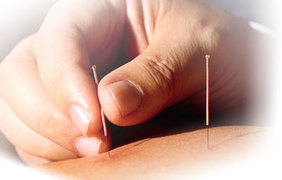[retweet][facebook]
Researchers note that the behavioral and tactile-motor training and clinical experiences of acupuncturists promotes specific types of brain development in practitioners. This is certainly one of the more unusual acupuncturist studies of 2013.
 Ordinarily, studies focus on the effects of acupuncture on patients. Now, researchers have made an intensive investigation of the effects of the profession on brain neuroplasticity in this controlled experiment. The MRI data demonstrates distinct brain development as a result of the professional acupuncturist experience. The study explores how the brain responds to daily activities in an effort to develop enhanced therapeutic rehabilitation and training techniques for widespread applications.
Ordinarily, studies focus on the effects of acupuncture on patients. Now, researchers have made an intensive investigation of the effects of the profession on brain neuroplasticity in this controlled experiment. The MRI data demonstrates distinct brain development as a result of the professional acupuncturist experience. The study explores how the brain responds to daily activities in an effort to develop enhanced therapeutic rehabilitation and training techniques for widespread applications.
The results of the testing confirmed that acupuncturists develop highly skilled tactile-motor abilities and emotional regulation proficiency. The MRI scans revealed that acupuncturists have “larger grey matter volumes… in the hand representation of the contralateral primary somatosensory cortex (SI), the right lobule V/VI and the bilateral ventral anterior cingulate cortex/ventral medial prefrontal cortex. Grey matter volumes of the SI and Lobule V/VI positively correlated with the duration of acupuncture practice.” The researchers hope this data can be applied to tactile-motor rehabilitation techniques. The researchers recommend additional studies to investigate the causal relationship between “practice/use and brain anatomy.”
The researchers cited examples of brain neuroplasticity. They noted that “imaging studies have provided compelling evidence that training/enhanced use of a body part or cognitive functions cause structural plastic changes in (the) human central nervous system in the model of dancers, sports experts and meditators.” This latest investigation was inspired by the fine dexterity of motor skills required of the acupuncture profession combined with the need for emotional regulation proficiency and the ability to generate precise motor commands and adjustments based on tactile feedback.
The research compared 22 acupuncturists with 22 non-acupuncturists. Musicians were excluded from the study to remove the dexterity variable. A tactile discrimination ability test revealed that acupuncturists have greater spatial acuity and tactile discrimination proficiency than the controls. The same was true of the fine motor skill test and the emotion regulation proficiency test. The MRI data imaging employed a 3T Siemens scanner. A professional radiologist examined the images prior to analysis.
The researchers note that of the acupuncturists, “Significantly larger grey matter volumes (p<0.01) were found in the acupuncturists as compared to NA in a subset of cerebral and cerebellar regions, i.e. the left primary somatosensory cortex (SI), the right lobule V/VI and the bilateral ventral anterior cingulate cortex/the vetral medial prefrontal cortex (vACC/VMPFC) after controlling for potential confounding variables including age, gender effects, level of education and total intracranial volume.” Significant increases in grey matter volume (GMV) were directly proportional to the number of years in practice.
The results showed that acupuncturists demonstrated significantly greater grey matter volumes over the controls in specific regions of the brain. The total volume of grey matter increases in these regions is directly proportional to the duration of acupuncture practice measured in years. More grey matter forms in the specific brain regions in response to participating in the profession.
The researchers note that the increase in grey matter volume in the cortical representation of the hand in the left SI cortex is potentially due to the necessary tactile discrimination functions an acupuncturist performs routinely. Notably, the acupuncturists studied use manual insertion techniques and manual manipulation techniques as part of their daily work routine. Results are expected to vary if acupuncturists use only tube needle insertion techniques with no manual manipulation of the needles. The researchers cited investigations showing that use is a “major factor driving plasticity of cortical maps.” Additional studies cited in the research “suggest that enrichment in the afferent sensory input could induce cortical morphometry changes in the adult human brain.”
The researchers note increased grey matter volume in the right lobule V/VI for licensed acupuncturists. Further testing revealed that acupuncturists have highly developed fine motor skills. The researchers note that these findings are consistent with research showing that finger movement control areas are dependent upon activation of the cerebellum in the specific brain regions showing increased grey matter. Further, the duration of acupuncture practice and training periods are consistent with the long-lasting abilities of acupuncturists to maintain high levels of dexterity in the fingers and the associated increase in grey matter volume.
The next part of the study finds that acupuncturists have bilateral increased grey matter in the vACC/VMPFC. The researchers note that studies show that this region is involved in the modulation of emotional responses. The vACC/VMPFC is involved in “suppressing and reappraising negative emotional stimuli” and is actively involved in this effect on behavior. The researchers noted that a long-term meditation study demonstrates that increases in grey matter in the vACC/VMPFC are consistent with increased ability to regulate emotions and control behavior. As a result, the bilateral vACC/VMPFC increase in grey matter of acupuncturists is probably related to emotional regulation development.
The researchers conclude that acupuncture training and practice is related to consistent, systematic structural changes in the brain. These changes are probably caused by the engagement of specific skill sets during training and practice. The researchers suggest further studies of training strategies, neuroplasticity and rehabilitation techniques based on these findings.
Excerpt from:
